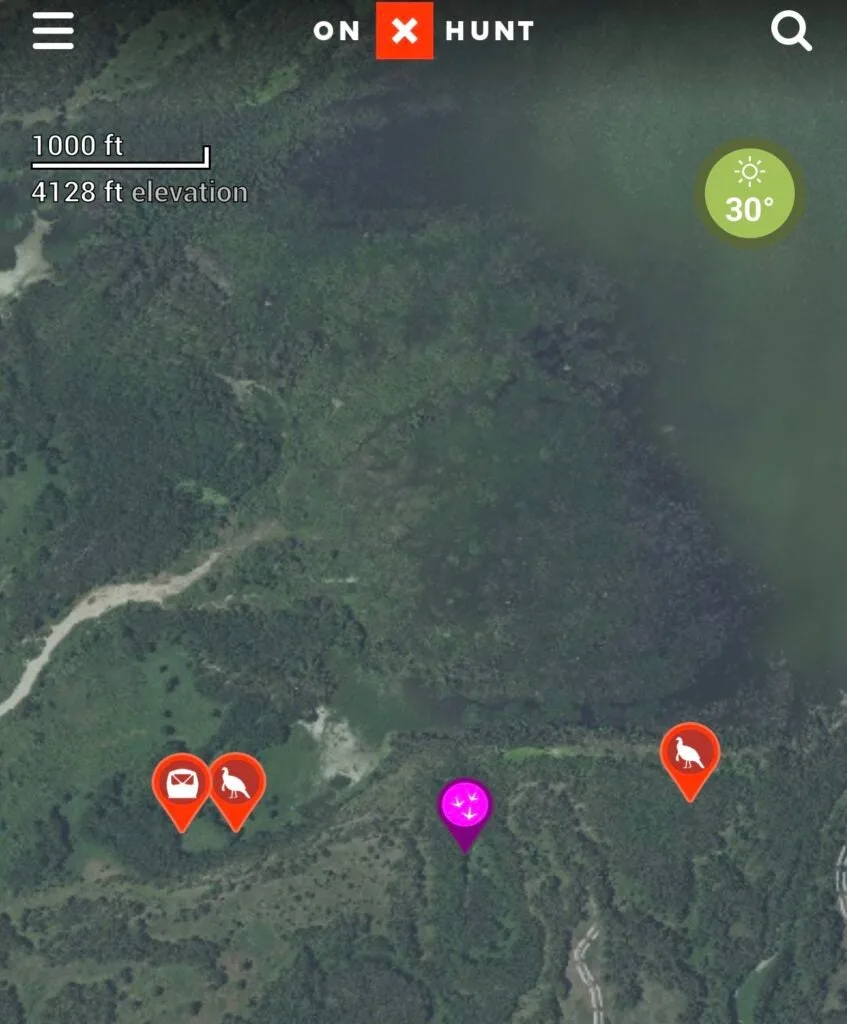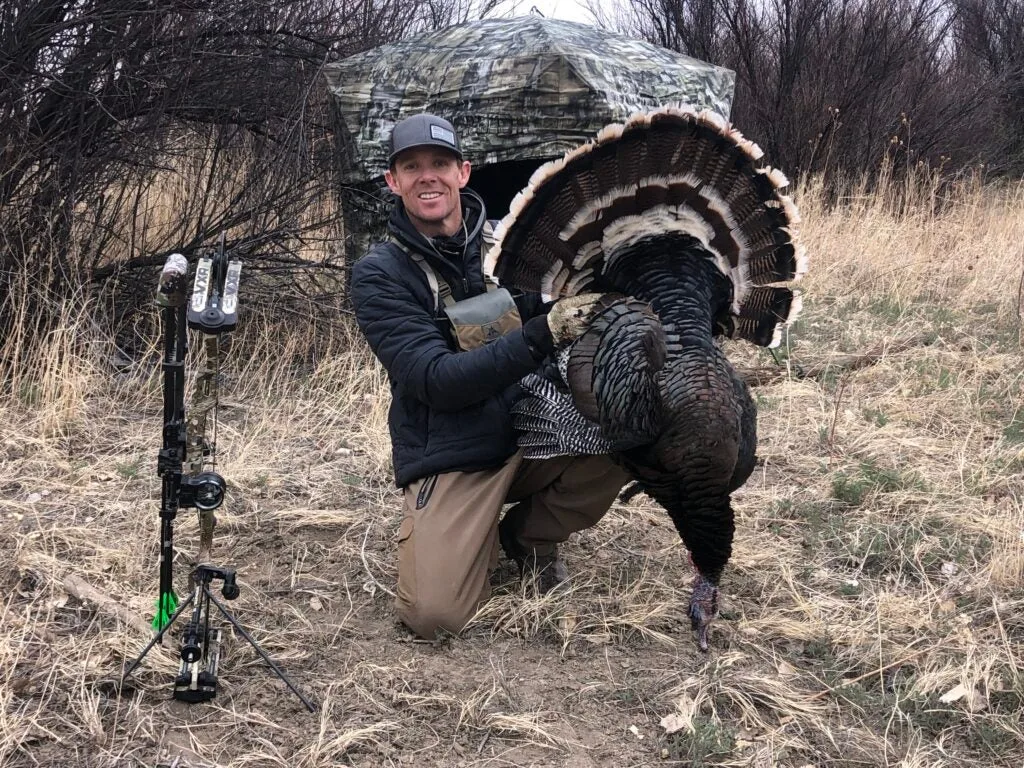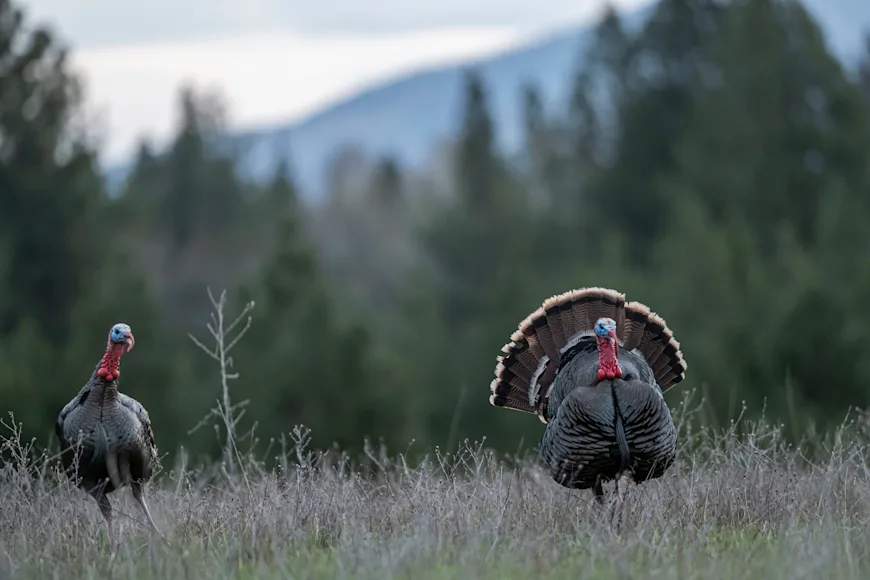I get it. You wan’t to get after a gobbler. You want to hear a tom sound off on the roost or strike him on the ground and then go make a play. For a lot of tree-stand whitetail hunters, what’s so great about spring turkey season is the chance to finally stretch your legs and roam the woods some. If you’re a Western-based public-land hunter, like me, you probably think of hunting as an active sport almost by definition. And yet, all of that being said, if you really want to tag a gobbler on pressured public land, your best bet, by far, is to scout out the perfect ambush, dig in your heels, and wait that bugger out.
Learn how to subscribe to the new Field & Stream magazine here!
Scout More and Hunt Less
It doesn’t matter how good you are. I’ve been at this a long time, myself, but I’ve also hunted with some of the very best, and one thing they’ll all tell you is that when turkey hunting gets tough, it gets tough for everyone. And once public-land birds feel some pressure, it gets tough. My rule of thumb, after 20-plus years of hunting public-land birds, is that by the season’s second week, most open-to-anyone turkey haunts have been pounded. Boot tracks cover turkey tracks, arrows have been launched, and shotgun blasts have echoed. Birds get smart.
That’s why anytime after the season’s second week, I will spend a full hunt day, sometimes two, just scouting public-land birds before hunting. Chances are good that these birds have changed their daily habits, and my goal is to keep a low profile and discover their new routine.

I recommend starting your morning by just listening for gobbles. How you go about this will be dictated by the landscape. In many locales throughout the Midwest and East, you can roll down access roads in your vehicle and tune your ear to the wind or hit a locator call and expect to hear birds. When hunting the West, especially in mountainous terrain, you may need to take a pre-dawn hike, gain some elevation, and listen. In any case, when a bird gobbles, mark its location on your favorite digital scouting app.
Once you think birds are off the roost, try to figure out where they go to feed and strut. Hens will be on the move for food, and gobblers will be in tow. While these birds may have hit the middle of ag fields and open meadows during the early season, their feeding and strutting zones have likely changed after some hunting pressure. Chances are good that they are now favoring open wooded ridges, logging roads that restrict access to foot travel, and smaller, more discrete openings. Another great spot to check is where public-land butts up against private ag fields, especially those that require hunters to walk a mile or more from the public-land parking lot.

Next, spend some midday time climbing to high points and putting your glass to work, especially out west and on the plains. I’ve learned a lot about pressured public-land birds and how they navigate terrain by keeping them in my glass for hours at a time. And the best part is that you’re not bumping birds in the process.
As evening approaches, get back to where you heard birds at dawn. Many turkey subspecies, especially Rio Grande and Eastern birds, will return to the same roost tree or roosting area if left alone. Later that evening while in your tent, camper, or hotel room, take all of your data, and the locations you marked on your app, and create a hunt plan.
Related: Strut Reporters: The Best Times to Hunt Turkeys This Spring
Skip the Roost Hunt and Set Up and Ambush

Given all you’ve learn, I could understand if you want to start the next morning with a roost hunt. But I recommend against it. Once birds get pressured, then get doubly hard to kill off the roost. Instead, use your scouting to put yourself in a high-odd mid-morning or midday spot where the turkeys want to be. Take a ground blind, a comfy chair, food, and a good book. The plan is to stay put, make minimal hen talk, and let the birds come to you. This is not the most exhilarating way to hunt turkey, I realize, but absolutely the best ways to punch a tag on public land when the birds are tight-lipped and super-cautious.
My sit-and-wait spot is always situated in a feeding or strutting/loafing area or between the roost and such a place. Take what your scouting gives you and make the most informed decision. I like a hub-style ground blind, whether hunting with a bow or shotgun. The wait may be several hours—I’ve sat as long as 10 before killing a bird—and you want to be comfortable. Inside a blind, as long as you’re wearing dark clothing and don’t get careless, you can move around a little and be comfortable.

While the sun is coming up, take time to brush in the blind in a bit and make your setup as natural as possible. If you know it will be a good grip of time before the birds arrive, take a look around. If you find loads of scratch marks and sign, be sure the blind is within shooting distance. My go-to ground blind, because of the visibility it provides, is the Double Bull 360 from Primos. Tote in a comfortable chair that doesn’t squeak or creak and a few ultra-realistic decoys. I’ve had great success using a quarter-strut jake and feeding-hen decoy setup, but lately, I’ve been going with just a couple of DSD (Dave Smith Decoys) Feeders. Remember, you’re not calling much, if at all. The only reason for the decoys is to give approaching birds something to focus on and bring them into bow or shotgun range.
Resist the urge to over-call. It doesn’t hurt to send a single yelp or a few purrs into the air, but keep it subtle. The idea is to sit and listen. Keep an ear tuned to the sound of scratching leaves, light clucks, yelps, or a distant gobble. You may be in for a long wait, but if you stay diligent and patient, chances are good your scouting will pay off with a public-land trophy.


